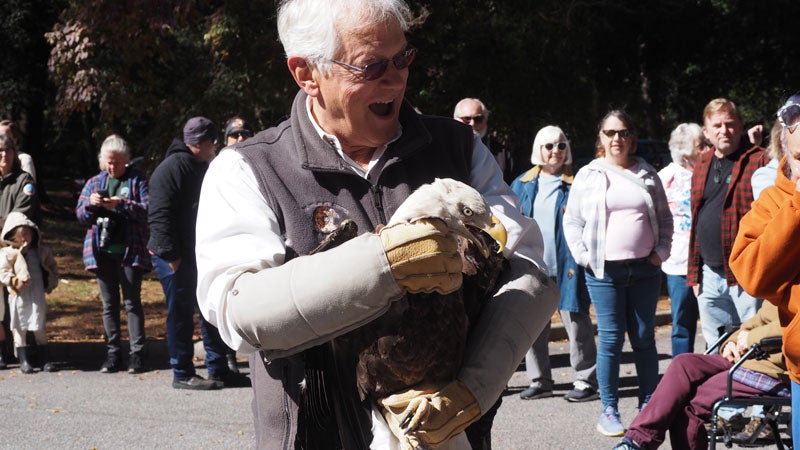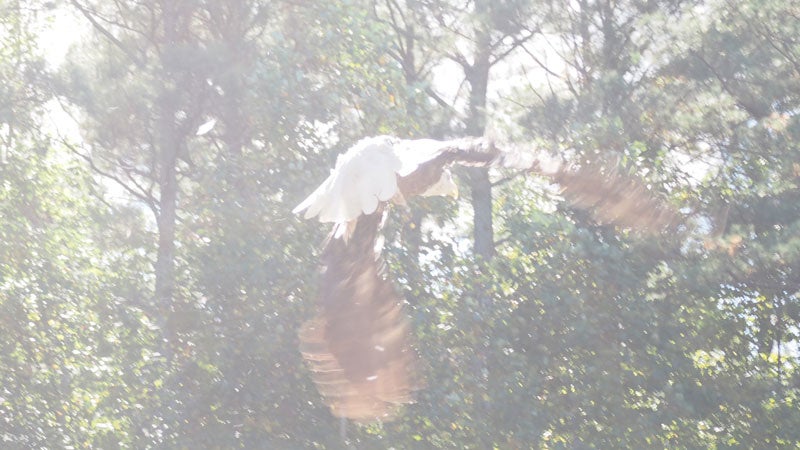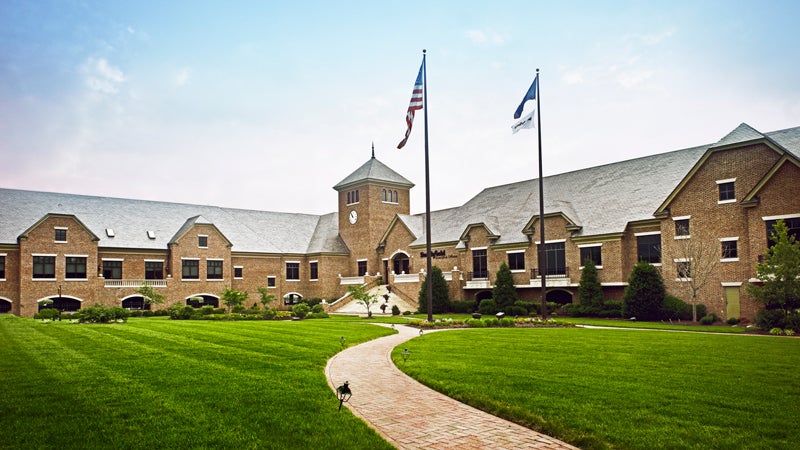Rescued eagle returns to the wild in Surry
Published 9:20 am Wednesday, October 18, 2023
When wildlife rescuer Julie Wobig received a call in March about an injured bald eagle in Smithfield, she drove more than 40 miles from her home in Williamsburg to take a look.
She found the bird lying on the ground at the edge of a driveway, bleeding profusely from a neck wound that reeked of infection.
“We didn’t really give her much chance,” Wobig said.
Seven months later, however, that same eagle is once again soaring.
Ed Clark, president of the Waynesboro-based Wildlife Center of Virginia, released the bird back into the wild on Oct. 16 at Chippokes State Park in Surry County, roughly 15 miles from where it was found.
Clark, who’s been with the nonprofit since its 1982 founding, describes his organization as the “Mayo Clinic for wildlife medicine.” Over the past decade, the center has provided medical care to nearly 400 bald eagles found injured, though the organization’s primary purpose, according to Clark, is to encourage people to care about Virginia’s wildlife and educate them on what they can do to reduce injuries.
A blood test the organization’s veterinarians and vet students performed on this particular eagle showed elevated levels of lead, at 0.184 parts per million.
According to Clark, eagles frequently ingest the remains of animals hunted with lead-based ammunition, which leads to a buildup of the toxic heavy metal in the bird’s body over time.
High levels of lead affect the brain and nervous systems of animals and humans.
Lead toxicity can cause birds to become uncoordinated, possibly resulting in them falling from the sky and becoming predisposed to being hit by a car. A lead bullet fragment no bigger than a small grain of rice can kill a bald eagle, according to a brochure from the center.
Clark recommends hunters use copper bullets instead of lead ones to reduce the likelihood of this happening.
This particular eagle also showed signs of being in a fight, according to Wobig. She’s been involved as a wildlife rescuer for the center for roughly five years, and typically rescues around 25 eagles per year, mainly during the fall and winter months. Her coverage area spans from Smithfield and Surry up through Northumberland County more than 90 miles north.
Wobig got her first glimpse of the bird’s will to live the day she encountered it. The eagle, despite its injured state, took off at top speed when she tried using a net to capture it, and led her on a mile-and-a-half chase through a nearby swamp before she caught it.
At the organization’s Waynesboro clinic, the eagle underwent what’s known as chelation therapy, where a solution high in calcium is injected into the bloodstream to bind with the lead and draw it out of the body. Left untreated, the lead would bind with the calcium in the eagle’s bones, Clark said.
The bird also received multiple surgeries and skin grafts. Grafting skin onto a bird is particularly challenging, Clark said, in that a graft needs feathers the same size and direction as what would have been present in the wounded area.
By July, the eagle was out of intensive care and moved to what the organization refers to as its exercise cage, a 100-foot-long enclosure where eagles can build back their strength and relearn to survive in the wild. By Oct. 9, center staff cleared the eagle for release into the wild.
Clark said the organization tries to release birds near the site where they were found in hopes that they will return to their original nests.
He estimates this particular eagle to be less than 10 years old. At around 4 1/2 years old, bald eagles get their iconic white-feathered heads, he said. This one had a white-feathered head but lacked the gnarly feet he typically sees on older birds.
According to the center’s literature, there were an estimated half million bald eagles as of the 17th century in what would become the United States. By 1970 there were only about 20 pairs of nesting bald eagles in Virginia, largely due to loss of habitat, poaching and the effects of DDT and other pesticides. As of 2021, bald eagle populations had resurged to more than 3,000 active nests in the Chesapeake Bay region.








